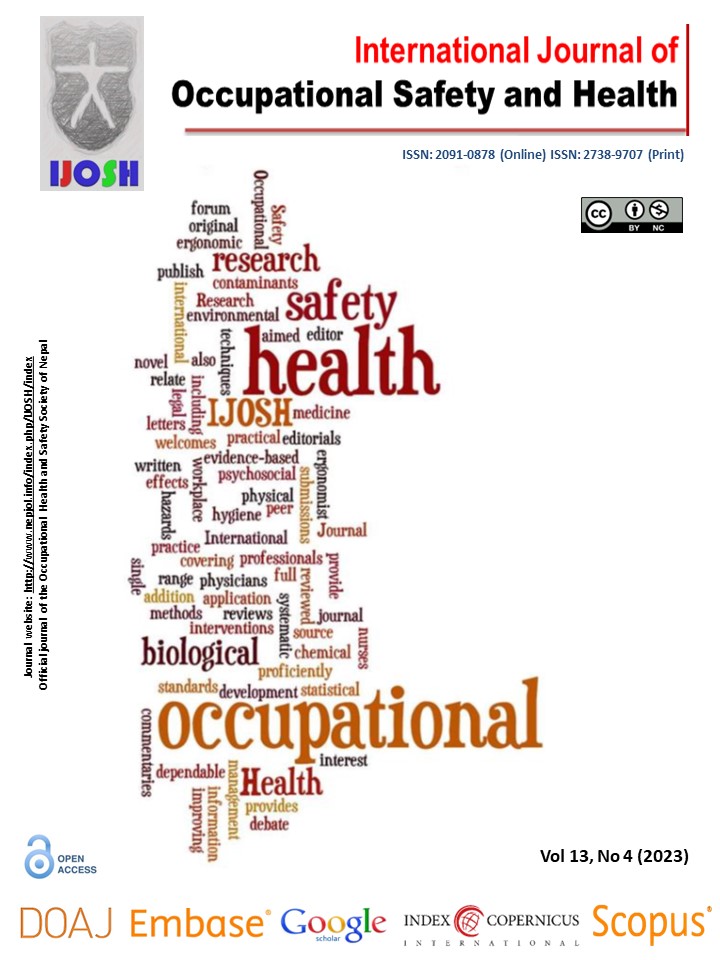Identification of Subjective Fatigue accompanied by Hypertension in Female Workers Making Tiles in Indonesia: A Cross-Sectional Survey
DOI:
https://doi.org/10.3126/ijosh.v13i4.48940Keywords:
Fatigue, Female Workers, Home industry, HypertensionAbstract
Introduction: The home industry has production process activities that are carried out manually. The release of the hormone adrenaline increases blood pressure through an increase in heart rate and arterial contractions, thereby accelerating the feeling of tiredness. As a result, female workers risk getting tired faster than men. Fatigue can lead to a decrease in productivity, poor quality of work, negatively affect the safety of workers, and increase the risk of work accidents. It aims to analyze the risk factors for subjective fatigue in female workers who have hypertension.
Methods: This type of quantitative research with a cross-sectional design. Respondents were 278 female hypertension workers at the Karangasem Village Tile Making Home Industry Center, Wirosari District, Grobogan, Indonesia. Data analysis using Chi-square with the SPSS 21.
Results: Of a total of 278 female workers, most were married (85.3%), did not smoke (98.9%), did not consume alcohol (96%), worked longer than 8 hours (93.5%), worked more than five years (80.9%), heavy workload (80.6%). Subjective fatigue factors related such as alcohol consumption habits (0.019), exercise habits (0.000), body mass index (0.000), working period (0.000), and workload (0.000). Meanwhile, other risk factors were not related, age (0.315), marital status (0.744), education level (0.811), smoking habits (0.236), disease history (0.762), length of work (0.530), type of work (0.393) and work stress (0.451).
Conclusion: Risk factors that have a relationship with subjective fatigue are workload, BMI, alcohol consumption habits, exercise habits, and length of service
Downloads
Downloads
Published
How to Cite
Issue
Section
License
Copyright (c) 2023 Diki Bima Prasetio, Yuliani Setyaningsih, Suhartono, Suroto

This work is licensed under a Creative Commons Attribution-NonCommercial 4.0 International License.
This license enables reusers to distribute, remix, adapt, and build upon the material in any medium or format for noncommercial purposes only, and only so long as attribution is given to the creator.





